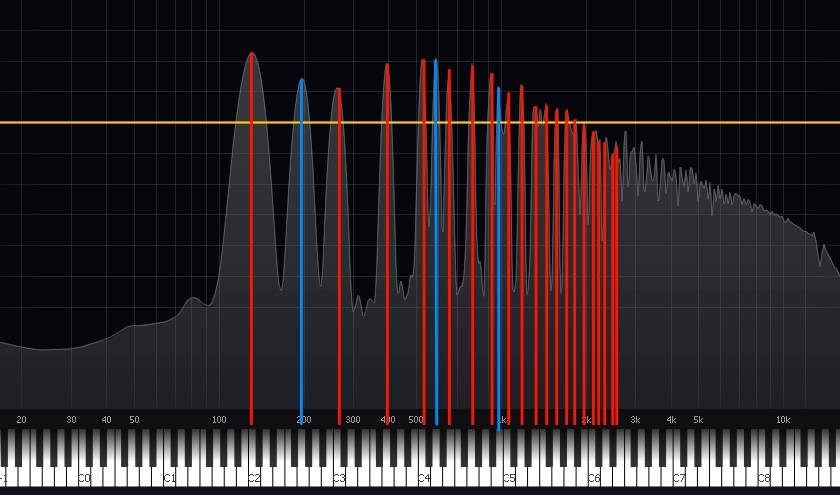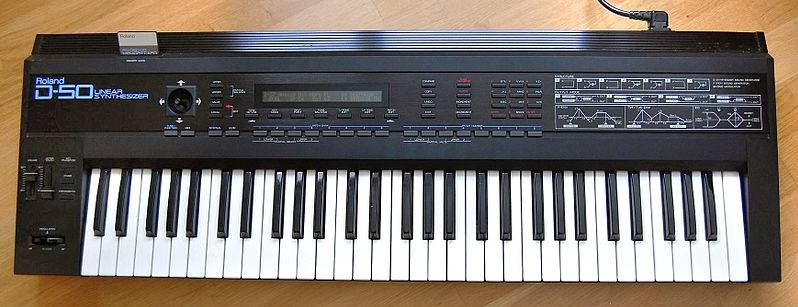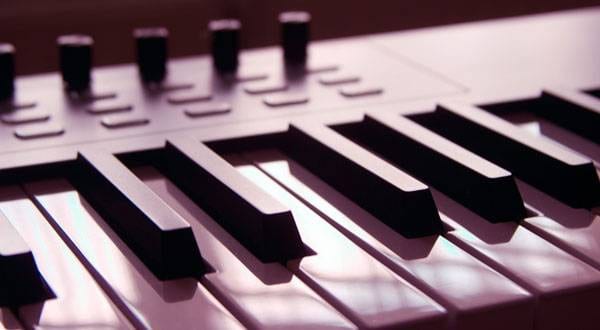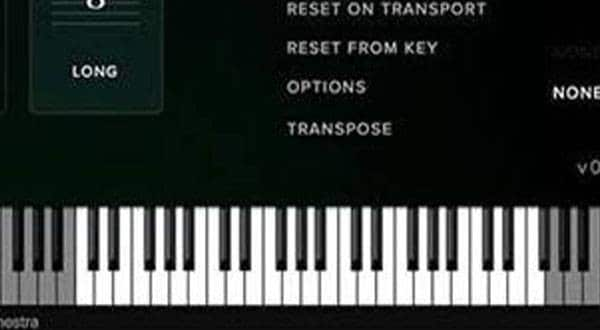■ Previous GM Sound Source Series
GM Sound Source 01: Ancient GM Sound Sources
GM Sound Source 02: Piano Category
GM Sound Source 03: Chromatic Percussion Category
GM Sound Source 04: Organ Category
GM Sound Source 05: Guitar Category
GM Sound Source 06: Bass Category
GM Sound Source 07: Orchestra Category
GM Sound Source 08: Ensemble Category
GM Sound Source 09: Brass Category
GM Sound Source 10: Reed Category
GM Sound Source 11: Pipe Category
GM Sound Source 12: Synth Lead Category
GM Sound Source 13: Synth Pad Category
‘SFX’ stands for ‘special effects’, primarily referring to special visual effects in movies. However, in this context, it refers to artificially created special sounds. This is the most liberated sound category, free from existing instruments and created purely based on imagination. If compared to visual art, it would be akin to avant-garde abstract paintings. An important distinction is that the sounds in this category have pitch, differentiating them from sound effects.
In GM sound sources, manufacturers can freely design sounds while following a predetermined sound list. However, for non-existent instruments, the only reference is the patch name. GM sound sources originate from Roland’s GS sound sources, meaning they must remain somewhat similar to maintain compatibility. Despite being a category with the flexibility unique to synthesizers, it paradoxically lacks complete freedom. The patch names themselves have long been a topic of debate. Even Roland, the original creator, could not escape the sounds they initially established.
For the demo video, since many of these sounds are quite unique, all effects have been turned off to showcase the raw sound. First, each sound is played on C4 to examine its characteristics, followed by a simple phrase to demonstrate the atmosphere.
097 000 Ice Rain (2 voices) - Range: C2-C7
In the GM2 specification, this patch is named ‘Rain’. However, since GM sound sources were first introduced in 1991, Roland has named it ‘Ice Rain’, evoking the sound of hailstones. The sound combines something similar to synth brass or strings with a hard attack sound reminiscent of a xylophone loop. The attack sound also features a gimmick where the pitch gradually lowers. Due to sampling characteristics, higher notes play at a faster speed, while lower notes play more slowly. The pitch is carried by the string-like sound, while the descending attack sound has a weaker sense of pitch, making it closer to a sound effect.
098 000 Soundtrack (2 voices) - Range: C2-C7
‘Soundtrack’ refers to film music, but it does not evoke a specific sound image on its own. This patch layers string-like sounds, detunes one of the pitches, and applies a resonance-heavy filter to create a distinctive attack. Spectral analysis reveals the presence of frequencies beyond natural harmonics (indicated by blue lines). The sound carries a somewhat ethnic flavor, resembling a stringed instrument version of a Chinese gong.

099 - Bell & Idiophone Sounds
099 000 Crystal (2 voices) - Range: C2-C7
This sound originated from the Roland D-50, released in 1987. It has a resonance similar to striking glass and can sound like a celesta. When it comes to metallic sounds, Yamaha’s DX7 FM synthesis from the 1980s is well known. The development of LA synthesis was partly a response to FM synthesis, but for metallic sounds, FM synthesis appears to have the edge.

Roland D-50, public domain (cited from Wikipedia)
099 001 Syn Mallet (1 voice) - Range: C2-C7
A mallet is a soft-headed beater used to play idiophones and membranophones. Though no specific instrument is designated, this sound represents a synthesized version of mallet-produced tones. It has a soft attack and a naturally decaying sustain.
100 000 Atmosphere (2 voices) - Range: C2-C7
The word ‘atmosphere’ conveys meanings like air, atmosphere, or ambiance, making this patch’s image quite abstract. The sound is a mix of harp and string-like elements that smoothly decay. String sounds are particularly useful for supporting other instruments. In an orchestra, strings often envelop the entire arrangement, filling in sonic gaps and creating a rich, full soundscape. The same principle applies to synthesizer sound design, where the strings help sustain the sound of the harp, which has a naturally short sustain.
101 000 Brightness (2 voices) - Range: C2-C7
‘Brightness’ refers to radiance or clarity. While it does not evoke a specific instrumental tone, it creates a sound reminiscent of light. This patch blends choral and string-like sounds, and despite the inherently slow attack of these elements, it manages to produce a noticeable sense of attack. However, it cannot completely escape the sacred choral imagery associated with such sounds.
102 000 Goblin (2 voices) - Range: C2-C7
The patch name ‘Goblin’ refers to the small mythical creatures commonly found in fantasy settings. The core sound consists of heavily sweeping synth voices. Just when it seems to stabilize after a few seconds, it suddenly undergoes modulation. This unpredictable transformation creates an unsettling effect. Choral sounds usually carry a sacred quality, but by distorting them, the patch achieves the opposite impression—like an angel turning into a demon. Additionally, a pitchless bubbling effect has been incorporated, further intensifying the eerie atmosphere.
103 Echoes
103 000 Echo Drops (1 voice) - Range: C2-C7
‘Echo’ typically refers to reverberating sounds, often associated with delay effects. However, this patch does not produce a typical delay sound. Instead, it uses two chorus-like tones that sweep, and when the key is released, a bursting sound occurs. This bursting effect evokes the imagery of water droplets, making the patch name ‘Drops’ quite fitting.
103 001 Echo Bell (2 voices) - Range: C2-C7
This patch combines an analog synth-like tone with a bell sound, creating a striking contrast between a thick, round timbre and sparkling metallic resonance. When a note is played, a bell chimes on attack and then continues to ring subtly in quick successions. When the key is released, the bell chimes once again.
103 002 Echo Pan (2 voices) - Range: C2-C7
The patch name does not suggest a specific tone but instead describes how the sound behaves. ‘Echo’ refers to reverberation, while ‘Pan’ refers to stereo positioning, implying a sound that echoes while moving left and right. True to its name, the sound echoes as it shifts from left to center to right. The echo effect was likely achieved using envelope control, which may have limited the number of repetitions.
104 000 Star Theme (2 voices) (sci-fi) - Range: C2-C7
According to the GM2 specification, this patch is named ‘sci-fi’, short for ‘science fiction’. In TTS, it is labeled ‘Star Theme’. The interpretation of this sound can vary greatly depending on the listener, making it difficult to pin down a single image. In TTS, it appears to be a blend of synth strings and metallic tones, creating a hybrid of soft and metallic sounds. The metallic string-like quality might be what evokes a sci-fi atmosphere.
The “sound & person” column is made up of contributions from you.
For details about contributing, click here.
















![[2023] Recommended Items for Music Programming - DAW/Software Instruments/Plug-ins](/contents/uploads/thumbs/2/2020/11/20201102_2_11495_1.jpg)
 定番DAWソフトウェア CUBASE
定番DAWソフトウェア CUBASE
 iZotopeが手がけるオールインワンDAW “Spire”
iZotopeが手がけるオールインワンDAW “Spire”
 DTMセール情報まとめ
DTMセール情報まとめ
 DTMに必要な機材
DTMに必要な機材
 バイオリンの基本的な取り扱い
バイオリンの基本的な取り扱い
 DTM・DAW購入ガイド
DTM・DAW購入ガイド















